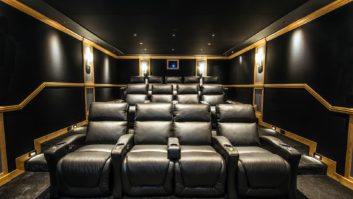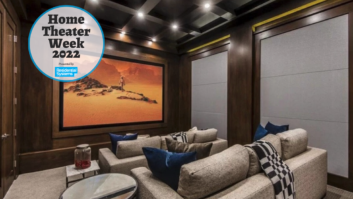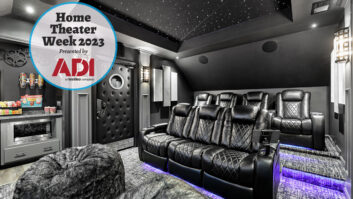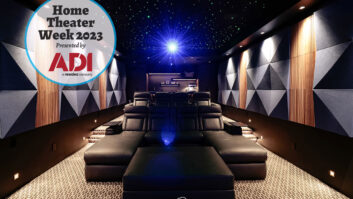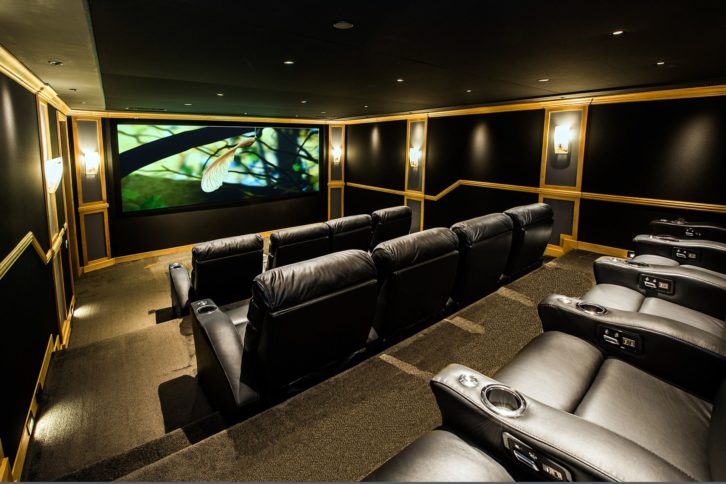
Do you feel like your custom home theater projects are a science experiment? Do you start out with a bunch of different pieces, theories, and postulates about how it should all fit together, but then it doesn’t progress exactly like you expected, and the whole thing turns into trial-and-error successes and failures until you finally end up with some semblance of a good system?
Wouldn’t it be nice if the process were a little less…stressful? Let’s talk about some ways to make that happen.
Obviously, you need to establish a repeatable process, which is easier said than done. Some folks try to use the same gear every time, but that doesn’t work. The same speaker is not big enough for every room; the same projector is not bright enough; and so on.
Also by Anthony Grimani: Installing Solar Theaters
Know your goal. Where do you want to end up? Fortunately, you don’t have to figure this one out yourself. A bunch of dedicated industry professionals at CEDIA have done it for you and written it down in the CEB 22 & 23 documents. Get your hands on these, learn the performance criteria and metrics, and you’ve taken the first step toward achieving them.
Know your gear. It’s great to have a clear perspective on the finish line, but you still have to get there. You know how loud the speaker has to play, but will it play that loud? You could install it and find out the hard way, but no… Learn about your gear. It has specs. When you read through them, do you know what they mean and how to determine if that gear will get you to the goal? You should.
Maybe not all the specs you need are there, though. Manufacturers tend to abbreviate specs because there’s not a lot of demand for the info. This is a sad state of affairs. We don’t have the specs we need, and we don’t know what to do with the ones we have!
To turn this around, we need a few intrepid integrators to reach out to manufacturers and begin a dialog. Talk frankly about what you need and find out what they have. Some will work with you. Others won’t. Which kind do you want in your corner?
Know the limitations of the project, the client, and yourself. You should never stop learning and expanding, but some projects are outside your current scope. Or they may be impractical based on the constraints of the room or the client and their budget.
If the project is bigger than anything you’ve done before, or requires expertise in a certain area you don’t have, get help. There is really no excuse for being uninformed. There are YouTube channels, subreddits, forums, CEDIA classes, and professional consultants standing by to help you. If you are ill-prepared for a project, that’s on you.
There are other cases where what the client wants is not compatible with the client’s room and budget. If you promise to deliver an impractical solution, the project is never going to end well. Try to steer the client toward more reasonable and achievable expectations, but don’t be afraid to bow out and let someone else take the bait.
Also by Anthony Grimani: A Battle Royale for Home Entertainment
Know what the system is actually doing compared to what it is supposed to be doing. There is a common misconception that “calibrating” a system is synonymous with setting up the components — going through all the menus and choosing the right options. This is not calibration.
Calibration involves playing sound through the speakers and putting an image up on the screen, measuring the sound and picture with test equipment, comparing those measurements to the goal, and then making changes until the measurements match the goal. If you are not doing this, you are not “calibrating.” You are just setting up or configuring.
Furthermore, if you are letting an automatic process do the legwork for you, that doesn’t absolve you of responsibility for it. It’s fine to have MultEQ or Dirac do the physical work of setting the room correction for you, or to let the display’s AutoCal set the grayscale. These systems are becoming increasingly more proficient at what they do, but you must still verify they did their work to your satisfaction.
If you don’t know enough about what they are doing to determine whether or not they achieved the goal (i.e., what they do is voodoo to you), that’s a problem. Audyssey and Portrait Displays have not promised to deliver your client CEB 22 & 23 performance — you have. They are your tools. You are not their servant.
Ultimately, every custom project will have some custom things that are outside your process. Despite your best efforts, there will be a certain amount of “science experiment” in every project. What you can do is minimize the “experiment” and maximize the “science.”
Anthony Grimani ([email protected]) is president of Grimani Systems, PMI Engineering, and Dimension4 Acoustics, with offices in San Francisco, Los Angeles, and Paris.
Chase Walton ([email protected]) contributed to this article.
